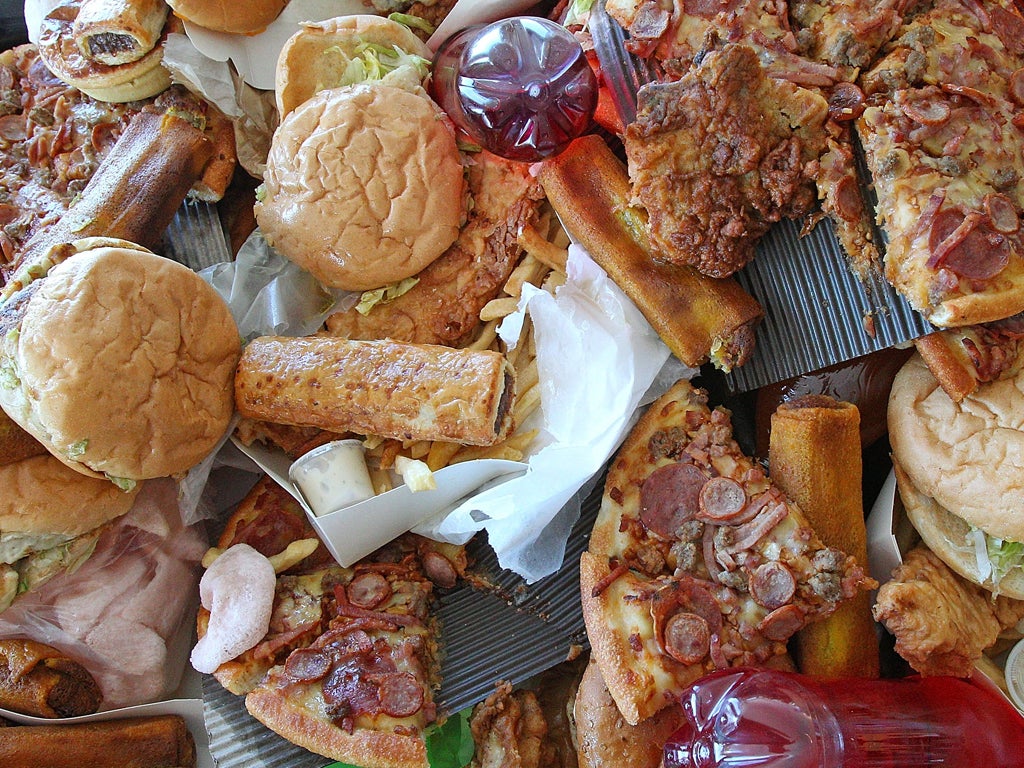As eating disorders are on the rise, it's important to remember that there's more to it than anorexia
The rate of hospital admissions for the treatment of eating disorders has increased by 16% over the last year.

Your support helps us to tell the story
From reproductive rights to climate change to Big Tech, The Independent is on the ground when the story is developing. Whether it's investigating the financials of Elon Musk's pro-Trump PAC or producing our latest documentary, 'The A Word', which shines a light on the American women fighting for reproductive rights, we know how important it is to parse out the facts from the messaging.
At such a critical moment in US history, we need reporters on the ground. Your donation allows us to keep sending journalists to speak to both sides of the story.
The Independent is trusted by Americans across the entire political spectrum. And unlike many other quality news outlets, we choose not to lock Americans out of our reporting and analysis with paywalls. We believe quality journalism should be available to everyone, paid for by those who can afford it.
Your support makes all the difference.Statistics are often a bit of minefield, but when it comes to those concerning an illness characterised by secrecy, shame and deception, even that is an understatement.
According to statistics published today by the Health and Social Care Information Centre (HSCIC) the rate of hospital admissions for the treatment of eating disorders have increased by 16% over the last year (although repeat admissions – which are quite common - are included).
Overall, between June 2011 and June 2012, hospitals across England recorded 2,290 admissions, with 55% of those being between the ages of 10 and 19, and only 9% were male.
Emphasis in the media will no doubt focus on the headline of the 'staggering' 16% increase, but the most worrying part of these latest statistics is much less obvious.
For a start, a rise in admissions is not necessarily a bad thing. We know that at least 1.6 million people in the UK are directly affected by an eating disorder; bearing that in mind, 2,290 admissions over a year is quite minuscule and of course, only represents some of the more extreme cases of anorexia and other eating disorders.
Knowing exactly how dangerous behaviours associated with eating disorders can be, and are, it is actually somewhat reassuring to see that there has been an increase in admissions, because it shows that more people are getting the help they desperately need.
I am more than certain that there are many more who wish they could be part of these statistics and become thin enough to be admitted to hospital.
What I find deeply unsettling is the fact that the statistics reflect, and hence perpetuate, many of the existing myths surrounding eating disorders and access to treatment. Especially, but not exclusively, with regards to male eating disorders and those who suffer with bulimia, compulsive over-eating disorder or binge-eating disorder.
91% of all admissions for treatment of eating disorders were female. This, I do find shocking. There is no wonder why people continue to perceive eating disorders as a women's illness when so many male sufferers are slipping through the net. Two main factors are likely to be at play here.
The first is that males with eating disorders are still living in fear of the stigma that they might face if they were to speak out and seek help, so they mask the problem and keep their illness their secret.
The second is that because this stigma does sadly still exist and there is still a huge lack of awareness in the area, so even those males who do seek help are often turned away or misdiagnosed. Once a person has been dismissed by a doctor, it is obviously then even harder to ask for help for fear that the same might happen again.
"A male friend of mine was turned away many times, told it was a fad and a phase, and only taken seriously after his organs failed and he went into cardiac arrest. "
I would suspect that the 9% mentioned are emergency admissions, such as a male friend of mine who had been turned away many times, told it was a fad and a phase, and was only taken seriously after his organs failed and went into cardiac arrest. This is the very tip of a vastly underestimated, absolutely massive iceberg.
What also worries me about these statistics is that almost three quarters of admissions were for people with anorexia, which again clearly explains why so many people know so little about other disorders. Anorexia is actually the least common of all eating disorders, but it definitely seems to get the most attention, both by the media and the medical profession.
Again, I presume that the majority of these admissions are for the most extreme, most emaciated anorexics. This perpetuates the myth that the seriousness of an eating disorder is reflected in the body weight or BMI of the patient, which again, is not true. All eating disorders are dangerous and I find it astonishing that only 7% of all admissions were for people with bulimia, which can be equally as devastating and dangerous as anorexia; purging through vomiting or abusing laxatives wreaks havoc on the body and can cause life-threatening imbalances which can lead to death.
I fear that the picture we get from the latest statistics is that with a huge emphasis on anorexia, especially in young girls. As ever, males, older people and those with other eating disorders are sidelined; this has to change.
It is sometimes the missing information that we should be most concerned about, and when I see these lists of percentages like these, I always find myself thinking about those left behind.
Join our commenting forum
Join thought-provoking conversations, follow other Independent readers and see their replies
Comments